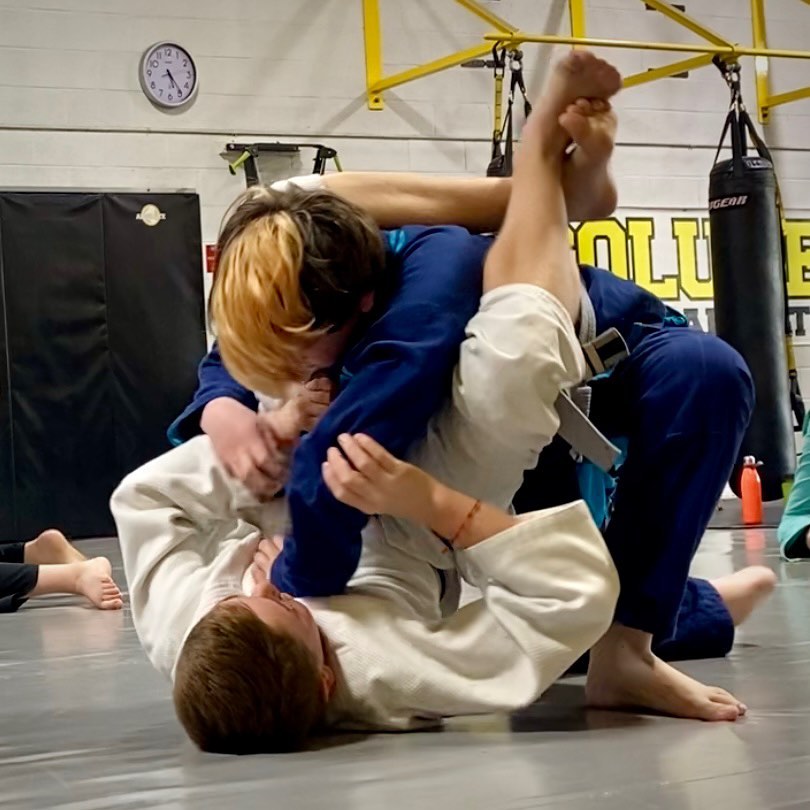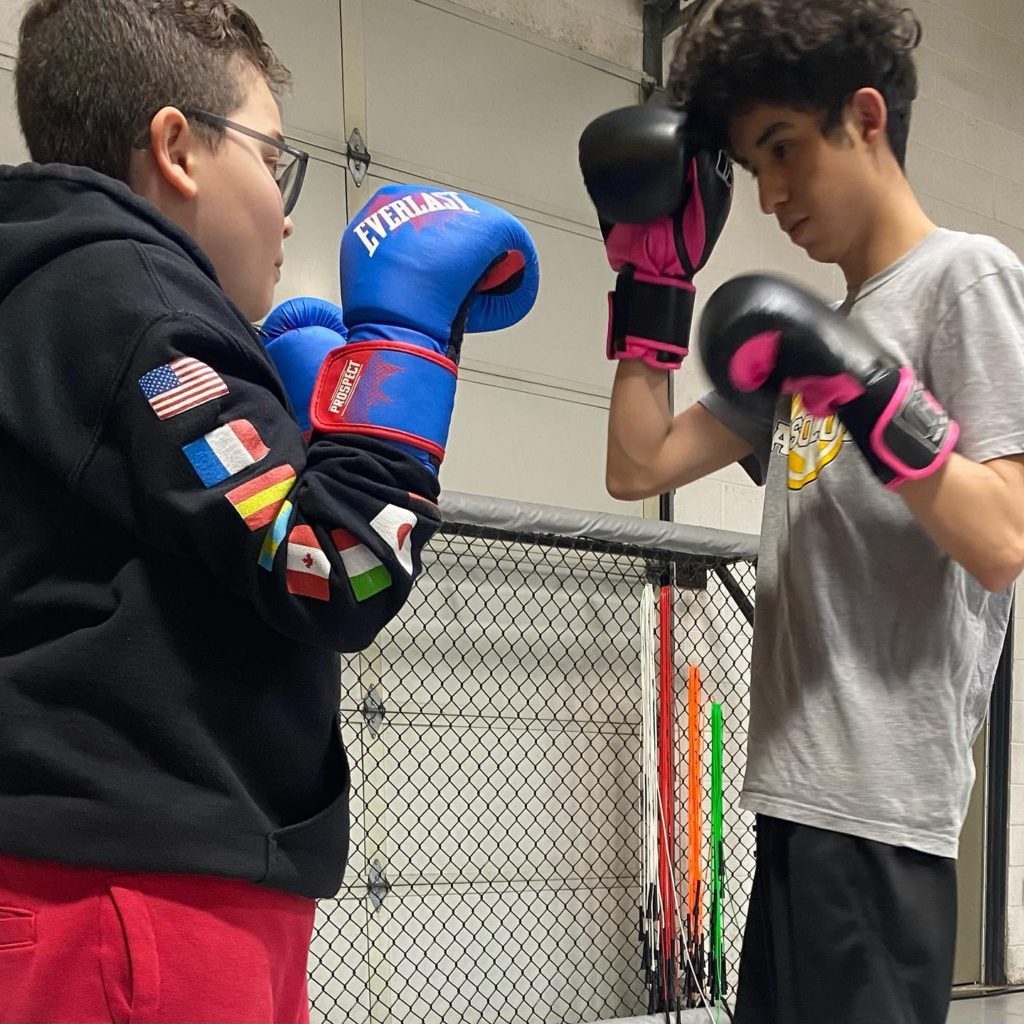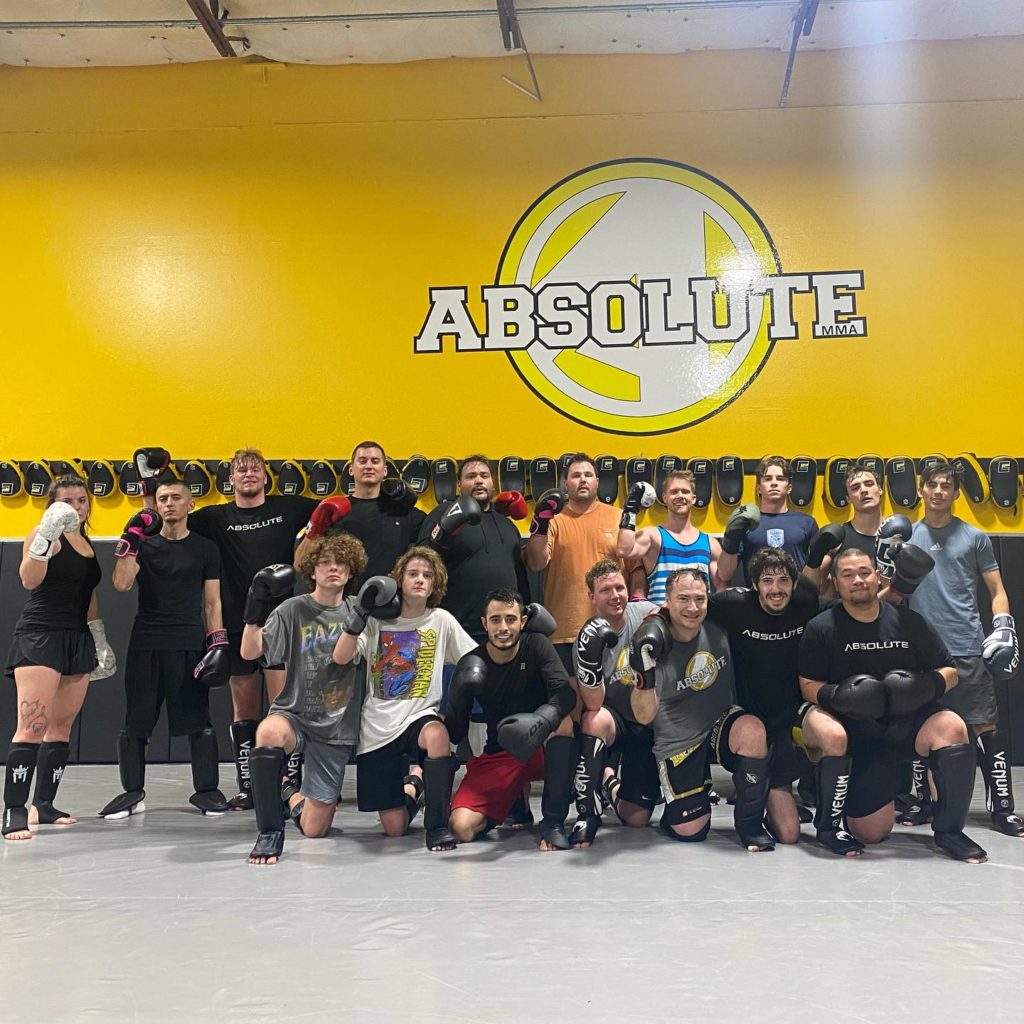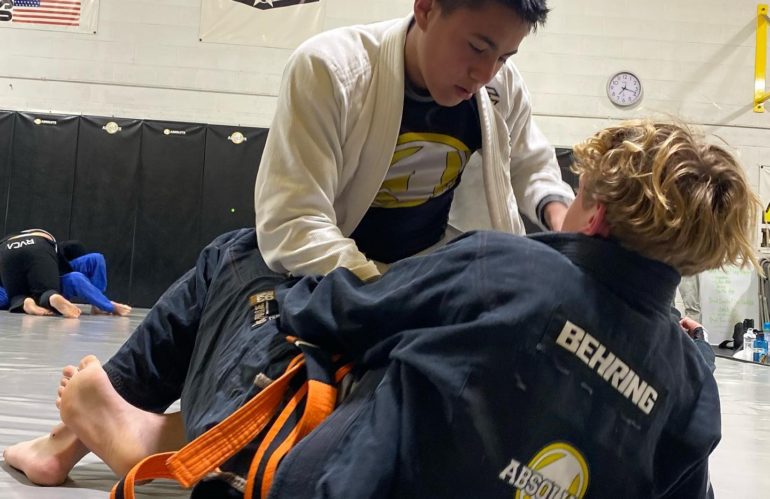Brazilian Jiu Jitsu (BJJ) and Boxing are two of the most popular combat sports in the world. These two Martial Arts are taught here at Absolute MMA in West Jordan, Utah. Our Brazilian Jiu Jitsu program is available for students of all ages. As for our Boxing curriculum, it is part of our Muay Thai program and has students of different ages like our BJJ program. This blog post will cover the history of BJJ and Boxing respectively followed by the key differences between BJJ and Boxing. You will also get a better idea of what to expect when attending classes at Absolute MMA and how it will benefit you.
A brief history of BJJ

Brazilian Jiu Jitsu (BJJ) is one of the fastest growing Martial Arts in the world. Its roots go back to Japanese Judo and Jiu Jitsu techniques brought together in the early 1900s by Grand Master Helio Gracie. The art quickly spread throughout Brazil and started to reach new heights thanks to the use of BJJ in the UFC.
BJJ enables people to protect themselves against a bigger, stronger, more aggressive opponent through leverage and control. Our BJJ classes at Absolute MMA in West Jordan, Utah are taught by Professor Rob Handley who received his black belt from Grand Master Flavio Behring.
A brief history of Boxing

According to some historians, Boxing can be traced as far back to 3000 BC in Egypt. Ancient Greeks in the late 7th century BC used soft leather to protect their hands and forearms. Since then Boxing has grown to global proportions with professional and amateur Boxers training around the world.
Boxing is taught at Absolute MMA as part of our Muay Thai/Kickboxing curriculum. It’s an effective combat sport that can be used for both self-defense and achieving fitness goals.
What are the key differences between BJJ and Boxing?
Before we dive into the key differences, there are some similarities like both Boxing and BJJ can help you protect yourself in a physical altercation. Training for Boxing and BJJ can help you receive a variety of benefits such as weight loss, better endurance, and the opportunity to make new friends. You’ll also feel more confident and be more comfortable with pushing yourself in tough situations.
Now that you have an idea of some of the similarities between the two arts, below are some key points that will help you understand what separates BJJ from Boxing.
Ground fighting focus for BJJ
BJJ teaches people how to take a fight to the ground and what to do when a fight is no longer on the feet. Through pins and submissions such as joint locks and chokes, you can effectively neutralize your opponent. You’ll also learn how to escape pins and other compromising positions to increase your chances of survival.
Most BJJ competitions don’t allow any striking and don’t require striking to win a match. Depending on the ruleset, BJJ practitioners can win by securing a submission or scoring more points than their opponent. These points are earned by doing things like taking an opponent’s back, getting a takedown, and passing an opponent’s guard.
Stand up striking focus for Boxing
Learning to Box will help you navigate fights while you’re on your feet. You will learn how to do everything from moving your feet to putting different punches together. Heavy bag work, focus mitts, and sparring will teach you how to effectively throw everything from jabs to uppercuts. Boxing will teach you how to use head movement and angle changes to help you avoid taking damage while on the feet.
In Boxing matches, Boxers can win by landing more effective punches to the head and body or by knocking out his/her opponent. Boxers can show dominance by controlling space in the ring, displaying good defense, and showing aggression. Taking an opponent to the ground is not allowed and can lead to point deductions or disqualification.
What can you expect in our classes at Absolute MMA?

All of our classes are taught by experienced instructors who are focused on helping you learn and grow. Students in attendance have varying levels of experience and athleticism. They also have different goals. Everyone from professional athletes to hobbyists train side by side.
We recommend drinking water and eating nutritious food throughout the day prior to attending class. This will benefit you in multiple ways such as helping you have the energy you need to avoiding cramps. You’ll be able to focus more effectively on the techniques you’re learning in class and not worry about feeling hungry.
Each class begins with a warmup to help you safely increase your heart rate and be ready for class. Warmups in BJJ class can involve movements like practicing breakfalls and neck exercises. For Kickboxing classes at Absolute MMA, warmups can incorporate shadowboxing and jumproping. The different movements you do will help you be ready for class and have the correct mindset you need to learn.
Following the warmup portion in class, you’ll learn new techniques and drill them with a partner. In BJJ, you’ll work on various techniques such as escapes and submissions with a partner. For Kickboxing, you may be hitting pads with a partner or doing heavybag work. Depending on the BJJ class, you will drill techniques until the end of class or have live sparring. Kickboxing classes can end with conditioning to close out the workout session followed by cooldown exercises.
As you regularly train, you’ll be able to make progress over time. Your ability to move and do the techniques you’re being taught will improve through time in the gym. You’ll be closer to the goals you set for yourself and have fun while you’re doing it!
Start your free one-week trial at Absolute MMA!
It’s time to take your first steps towards your goals with us in West Jordan, Utah! Schedule your free one-week trial using this link: https://absolutemma.com/free-trial/. During your trial, you’re welcome to try out the different classes we offer including Brazilian Jiu Jitsu, Judo, and Kickboxing for MMA.

